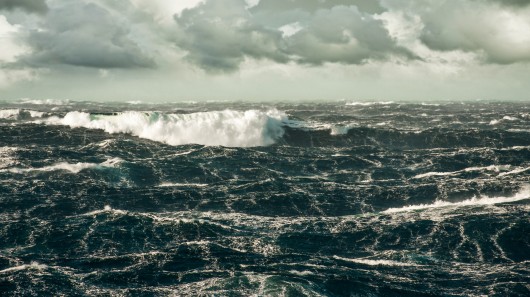
A new MIT study has examined the possibility of acoustic-gravity waves – high-speed sound waves often generated by underwater earthquakes and landslides – acting as an early warning of tsunamis and rogue waves.
Gravity waves (such as ocean surface waves) and acoustic waves, the former of which is generated by interference between fluids and the latter of which are caused by longitudinal compression, are generally studied separately from each other. But the study of acoustic-gravity waves (AGW), which are compression waves modified by gravity, could provide important insights into deep ocean water transport and current production.
Acoustic-gravity waves move through the deep at the speed of sound and can travel thousands of meters below the surface. They’re also huge, measuring tens or even hundreds of kilometers in length. It’s thought that certain lifeforms such as plankton, that are unable to swim against a current, rely on the waves to aid their movement, exposing them to larger areas and enhancing their ability to find food.
Usama Kadri, a postdoctorate researcher in MIT’s Department of Mechanical Engineering, modeled the theoretical movement of liquid caught by AGW at depths ranging from hundreds to thousands of meters below the surface. His findings suggest that the waves have the ability to transport millions of the cubic meters of the water with them, pushing carbons, salts and other nutrients around the globe at astonishing rates.
Mr Kadri commented on the significance of studying the waves, stating, “Since acoustic-gravity waves are so much faster than tsunamis or rogue waves, successful recordings of […] acoustic-gravity waves would enhance current warning systems dramatically, and improve detection by minutes to hours depending on the source location, either of which would be sufficient to save many lives.”
Mr Kadri is continuing his work on AGW with that goal in mind, developing predictive computations to analyze acoustic signals for the fast-traveling waves.

 Previous page
Previous page Back to top
Back to top







